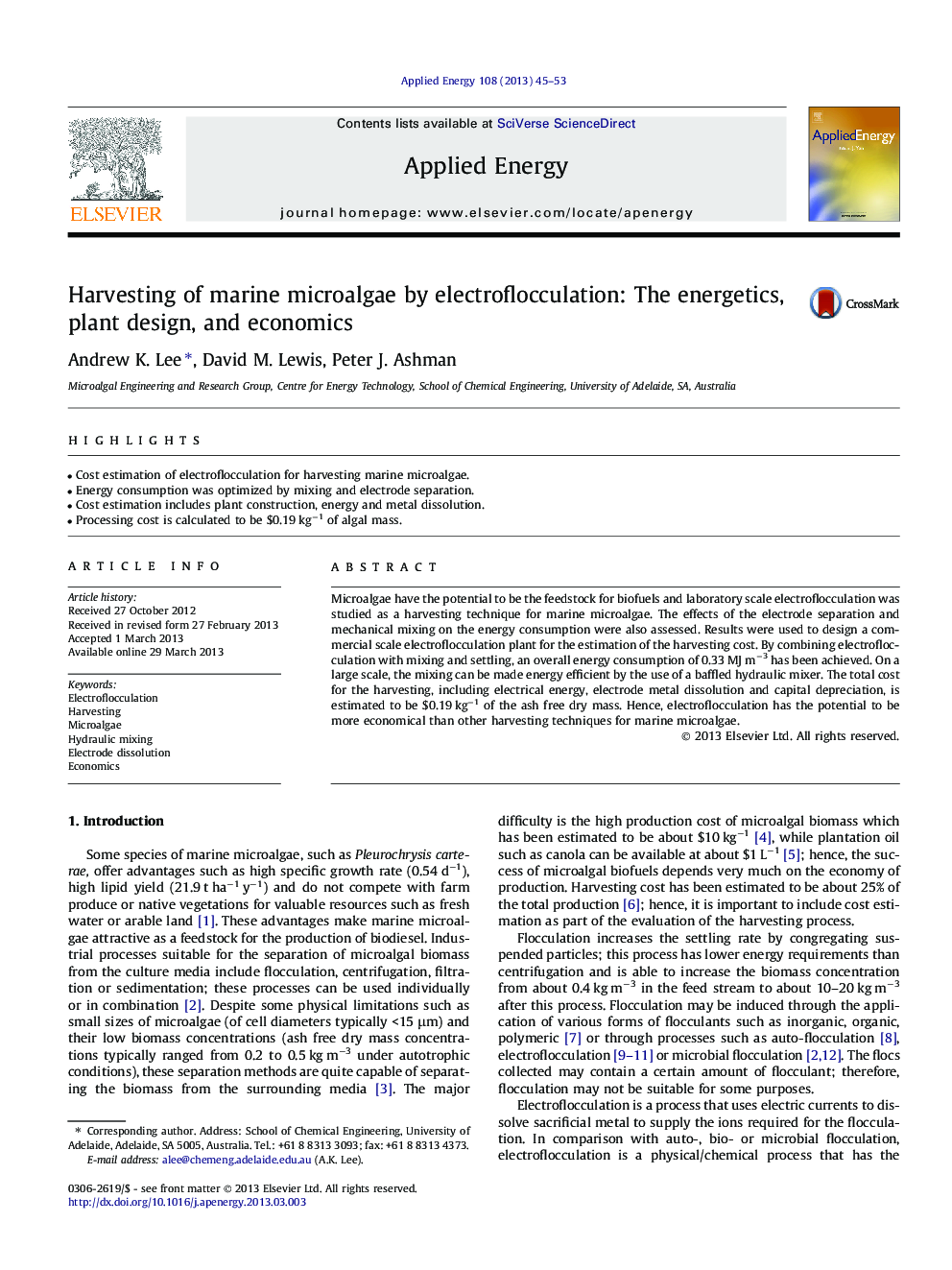| Article ID | Journal | Published Year | Pages | File Type |
|---|---|---|---|---|
| 6692718 | Applied Energy | 2013 | 9 Pages |
Abstract
Microalgae have the potential to be the feedstock for biofuels and laboratory scale electroflocculation was studied as a harvesting technique for marine microalgae. The effects of the electrode separation and mechanical mixing on the energy consumption were also assessed. Results were used to design a commercial scale electroflocculation plant for the estimation of the harvesting cost. By combining electroflocculation with mixing and settling, an overall energy consumption of 0.33Â MJÂ mâ3 has been achieved. On a large scale, the mixing can be made energy efficient by the use of a baffled hydraulic mixer. The total cost for the harvesting, including electrical energy, electrode metal dissolution and capital depreciation, is estimated to be $0.19Â kgâ1 of the ash free dry mass. Hence, electroflocculation has the potential to be more economical than other harvesting techniques for marine microalgae.
Related Topics
Physical Sciences and Engineering
Energy
Energy Engineering and Power Technology
Authors
Andrew K. Lee, David M. Lewis, Peter J. Ashman,
